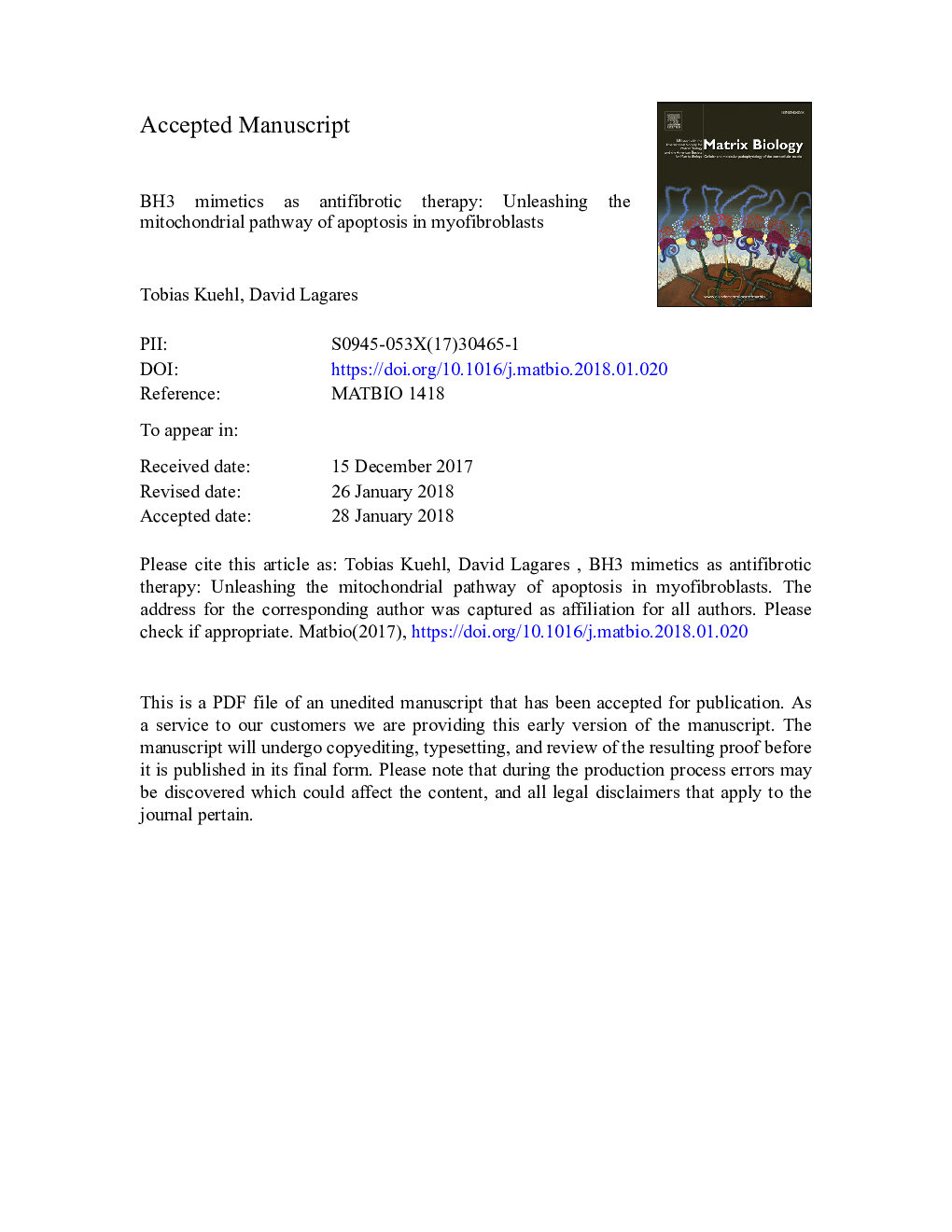| کد مقاله | کد نشریه | سال انتشار | مقاله انگلیسی | نسخه تمام متن |
|---|---|---|---|---|
| 8454983 | 1547994 | 2018 | 25 صفحه PDF | دانلود رایگان |
عنوان انگلیسی مقاله ISI
BH3 mimetics as anti-fibrotic therapy: Unleashing the mitochondrial pathway of apoptosis in myofibroblasts
دانلود مقاله + سفارش ترجمه
دانلود مقاله ISI انگلیسی
رایگان برای ایرانیان
کلمات کلیدی
Rho associated protein kinaseα-SMABH3 mimeticSSCFAKIPFECMmitochondrial outer membrane permeabilization - permeabilization غشای خارجی بیرونی میتوکندریAlpha-smooth muscle actin - آکتا عضله آلفا صافchronic kidney disease - بیماری مزمن کلیویApoptosis - خزان یاختهایidiopathic pulmonary fibrosis - فیبروز ریوی ایدیوپاتیکFibrosis - فیبروز یا فساد الیافExtracellular matrix - ماتریکس خارج سلولیMOMP - ماموریتMyofibroblast - میوفیبروبلاستCKD - نارسایی مزمن کلیهBcl-2 homology - همولوگ Bcl-2focal adhesion kinase - کیناز چسبندگی کانونیRock - یا راک
موضوعات مرتبط
علوم زیستی و بیوفناوری
بیوشیمی، ژنتیک و زیست شناسی مولکولی
تحقیقات سرطان
پیش نمایش صفحه اول مقاله

چکیده انگلیسی
Organs and tissues in mammals can undergo self-repair following injury. However, chronic or severe tissue injury leads to the development of dense scar tissue or fibrosis at the expense of regeneration. The identification of novel therapeutic strategies aiming at reversing fibrosis is therefore a major clinical unmet need in regenerative medicine. Persistent activation of scar-forming myofibroblasts distinguishes non-resolving pathological fibrosis from self-limited physiological wound healing. Thus, therapeutic strategies selectively inducing myofibroblast apoptosis could prevent progression and potentially reverse established fibrosis in fibrotic diseases. In this Review, we discuss recent findings that have demonstrated that activated myofibroblasts, traditionally viewed as apoptosis-resistant cells, are actually “primed for death”. In this state, mitochondria of activated myofibroblasts are loaded with proapoptotic BH3 proteins, which creates a cellular “addiction” to individual antiapoptotic proteins to block prodeath signaling and ensure survival. This creates a novel therapeutic opportunity to treat organ fibrosis by inducing myofibroblast apoptosis with the so-called BH3 mimetic drugs, which have recently shown potent antifibrotic activities in experimental models. Finally, we discuss the potential use of BH3 profiling as a functional tool to diagnose myofibroblast addiction to individual antiapoptotic proteins, which may serve to guide and assign the most effective BH3 mimetic drug for patients with fibrotic disease.
ناشر
Database: Elsevier - ScienceDirect (ساینس دایرکت)
Journal: Matrix Biology - Volumes 68â69, August 2018, Pages 94-105
Journal: Matrix Biology - Volumes 68â69, August 2018, Pages 94-105
نویسندگان
Tobias Kuehl, David Lagares,